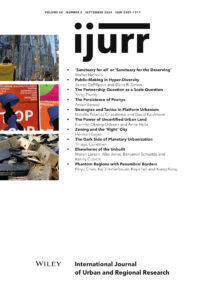Since 1991, Bangalore has seen spectacular redevelopment through the political hegemony of real estate, IT and parastatals in local urban governance. The global city literature has demonstrated how gentrification and real estate redevelopment have been at the heart of such neoliberal urban transformation. Yet, the literature’s roots in notions of ‘post-industrial’ cities obscure a view of how industry remains a key part of contemporary global cities. The persistence of the Peenya Industrial Area, one of South Asia’s largest industrial areas today, reflects the negotiated, partial, contested and uneven character of the neoliberal urban project. Peenya demonstrates how obdurate inherited urban industrial geographies continue to shape the dynamics of world city-making. Established in the heyday of Bangalore’s postcolonial public sector industrialization, Peenya employs over 180,000 workers in 8,236 manufacturing firms, even today. How does such vast industrial space persist within the core of a global city? I draw on interviews and qualitative field research to argue that Peenya’s resilience is rooted in the complexity of private land aggregation and state-sponsored industrial relocation within an interwoven geography of tiny, legally fluid land holdings with variegated tenure regimes as well as the challenge of re-signifying space in a region with obdurate industrial imaginaries.
Details
Written by:
Aman Banerji
Digital Object Identifier (DOI)
https://doi.org/10.1111/1468-2427.13247
About DOI

